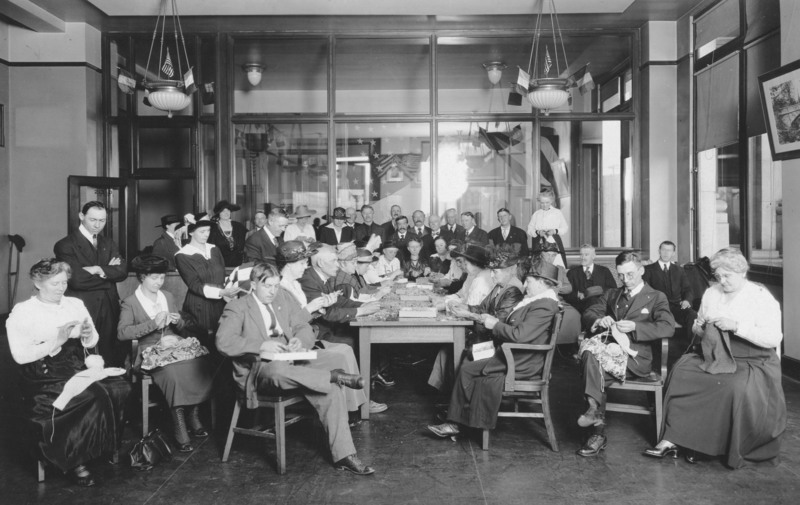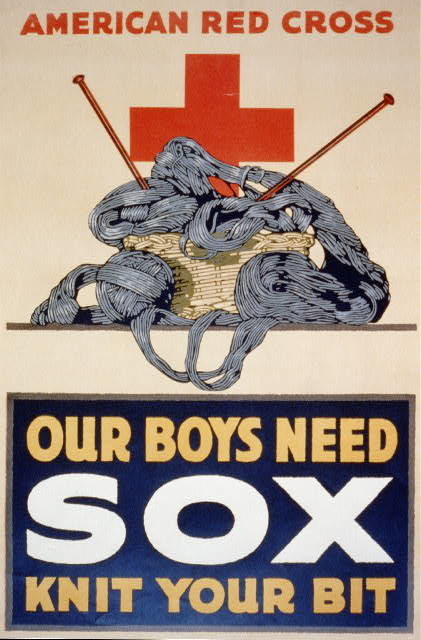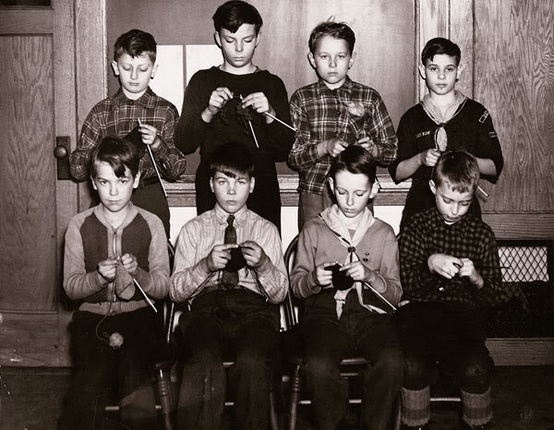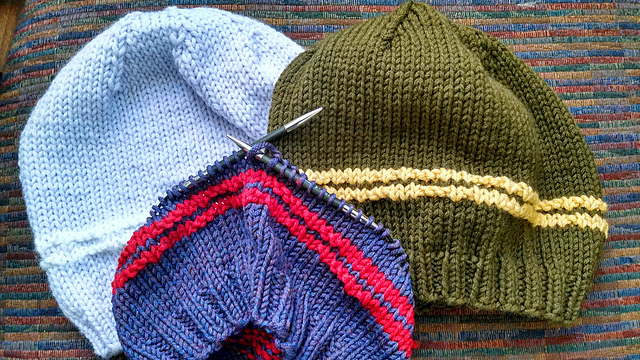
A colleague here sent around this cool article about WWI and WWII spies who used knitting to code observations for the Resistance. It seems unlikely to me that a lot of knitters went to the trouble to learn codes in order to report findings, it seems perfectly reasonable that a person might use knitting or needlework as cover for close observation. There is something about these “womanly” pursuits that render the crafter seemingly harmless.
http://www.telegraph.co.uk/men/the-filter/qi/10638792/QI-how-knitting-was-used-as-code-in-WW2.html

I think it unlikely that knitting was taught or practiced as an organized espionage technique because this article in the Telegraph references the exact same case of the Belgian woman making notes as she sat at her window, watching trains go by. If it were an organized and more widespread practice, it seems like more would have been published about it by now. (I could be wrong, but it generally seems like this kind of “women’s” task is just not on the radar of most military minds.)

People were encouraged to knit to provide soldiers with warm socks and other clothing through multiple wars (see my post Textiles Speak) as this WWI poster from the National Archive shows. (You can read more about it here and here and here.) There is even a current project, through the National WWII Museum in New Orleans, to donate scarves to veteran’s hospitals and homes.

Knitting has a long history of being an observer’s pasttime during important political events. Madame Defarge, Charles Dickens’ famous guillotine observer, was based on historical women who knit while watching the public executions at the guillotine during the French Revolution. In Tale of Two Cities, Defarge encodes the names of each victim into her knitting.
The idea of knitting in codes has caught the imagination of knitters in recent years. A quick internet search turned up many examples of patterns where the creator used the stitches to spell out messages in the dots and dashes of Morse code. These seem to most often be worked on a plain knit ground with a single purl stitch as a dot and a row of three purl stitches as a dash. Knitting coded words into garments like these gives them an apotropaic or protective quality, not unlike wearing medieval Tiraz bands or glass evil eye pendants.

Knitting consists of two basic looped stitches, a knit and a purl. All larger pieces of patterns are made of these two stitches, making it similar to the binary coding aspect of computer programming. These two women designed a collection of knits inspired by Bletchley Park, the WWII secret site where English secret service recruits developed the first computing machine and broke the Nazi’s Enigma code.
Computer coders play with the binary nature of both knitting and coding in all kinds of ways. Because of the similarities in logic, knitting is being used as a way to explain major coding concepts. Here are some other playful things knitter/coders have done with their yarn recently:
Happy knitting, everyone! Hurray for textiles!
Comments
2 responses to “Well-knit codes”
Thank you for the information you provided. Textiles are always important to the world
Thanks for this article.